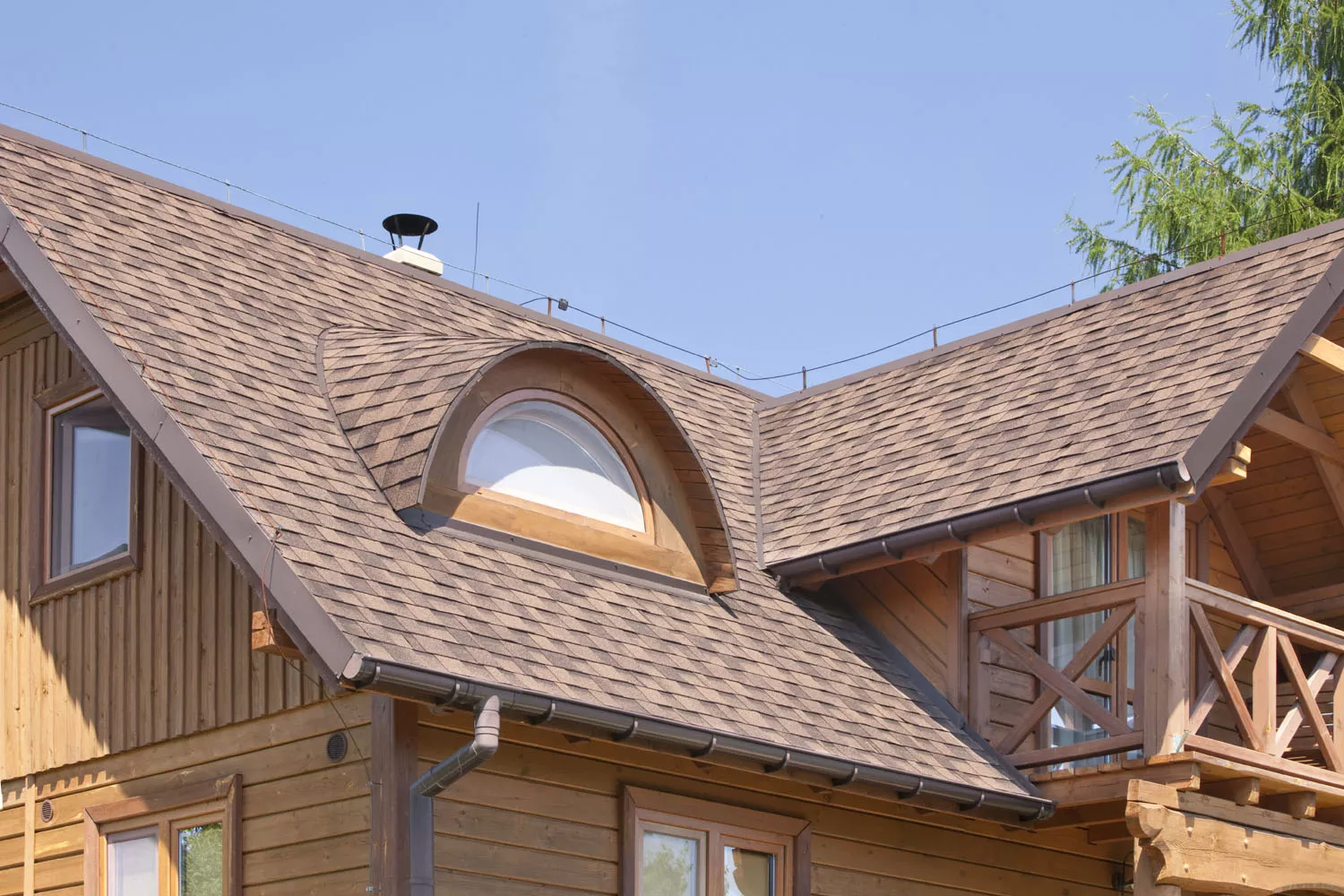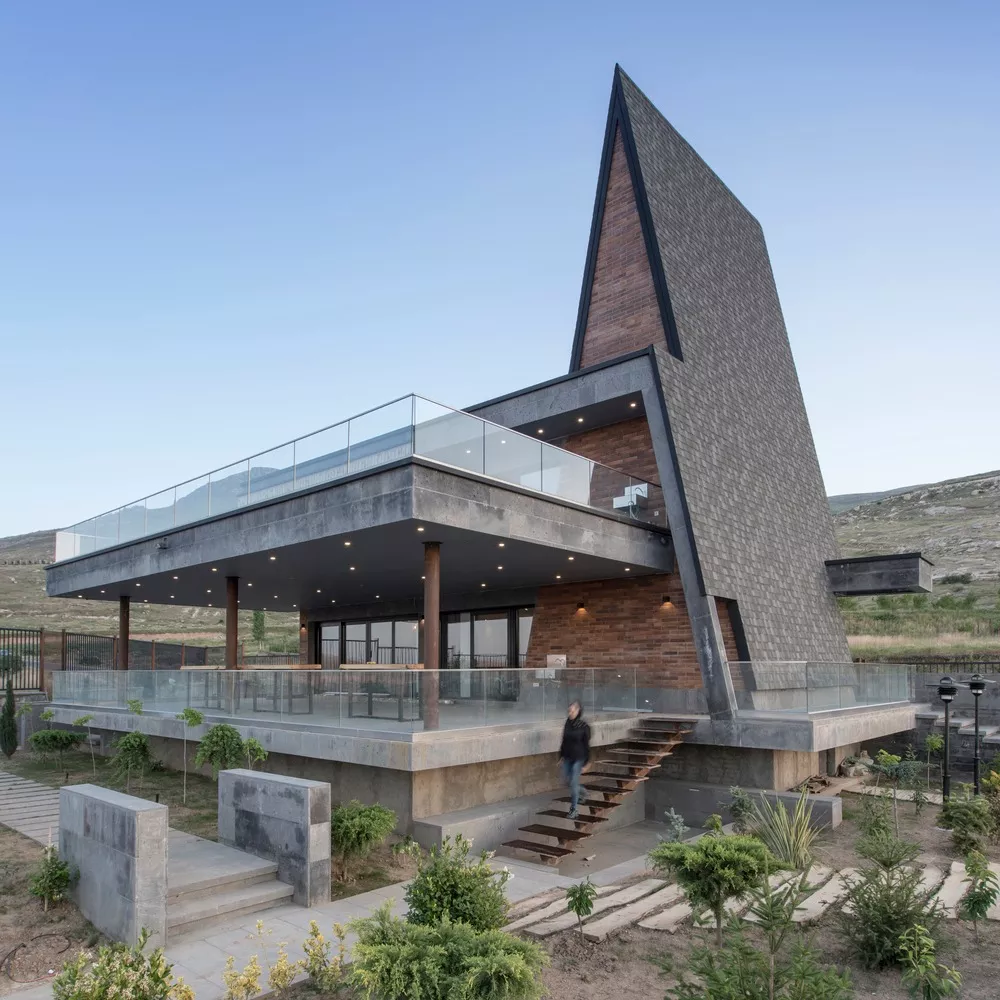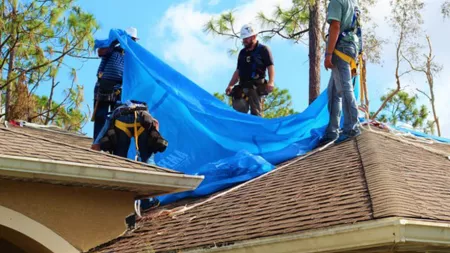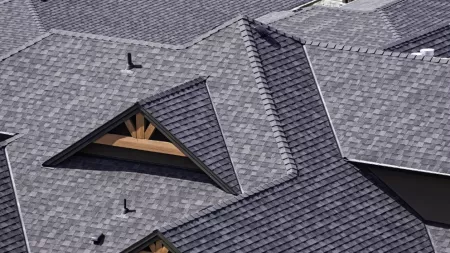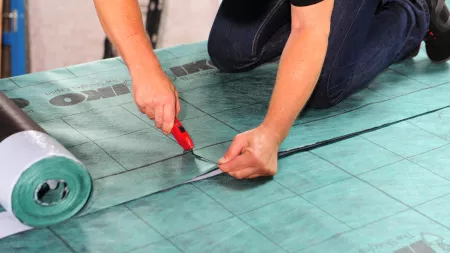
Reroofing over an existing shingle roof: Some facts and what you need to know
Photo: Reroofing “The Westin Turtle Bay Resort & Spa, Mauritius” with IKO Cambridge 53
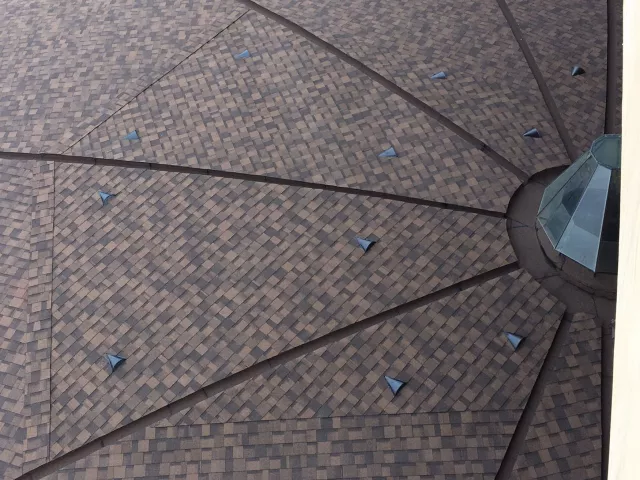
You want to renovate? Or change the appearance of your property? Is the end of the life expectancy of your roof coming closer? Reroofing can be the answer!
When your shingle roof is nearing the end of its lifespan, it is probably the time for some big decision what to do. Decision must be made whether to remove the old shingles or apply new shingles directly over the existing layer.
It’s called reroofing and this is the process of recovering or replacing an existing roof covering.
With the exception of asphalt shingles, no other pitched roofing materials will allow you to perform the repair process directly over the existing roofing material. By using shingles you'll save time and money and you will manage the renovation process easier and faster. By using bitumen shingles for your roof, you'll reduce the impact on the environment.
Difference between reroofing and roof replacement
Roofing over an existing roof is also called reroofing or an overlay. It is the process where roofers install a new roof over your existing one, i.e. add a new layer of shingles, which means that there is no tearing off of the old roof.
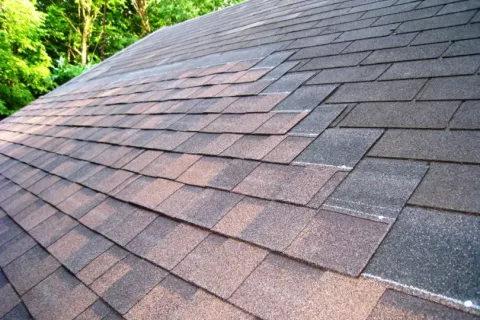
Roof replacement is the process of installing a completely new roof that includes tear off of the old one. Roofers will tear everything off, down to the deck of the roof, and basically start from scratch with the new roof, from putting an underlay e.g. Armourbase Pro Plus and then installing shingles.
The replacement of roof involves much more time and labor which is more expensive than reroofing. When a roof doesn’t have underlying problems is an old and simply losing its function, reroofing might be a better solution as it involves much less work on your home, as well as less money
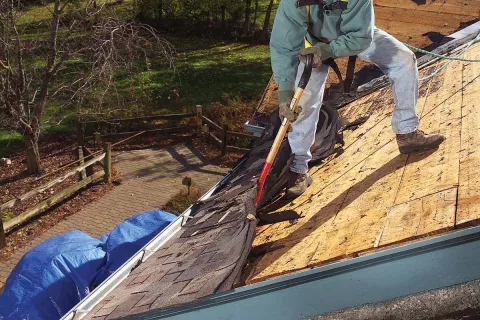
When is it better to put a new roof over an existing roof
When your roof starts to fail, but it is in an overall good condition, a reroofing might be the best choice for you. It means that your roof may be at the end of its life, but its underlying structures and wooden deck are in a generally good condition. Your shingles may be losing granules and are worn out due to age or weather, but they are not causing leaks, they are not curling or missing. These are all good predispositions for installing a new layer of shingles over the existing one.
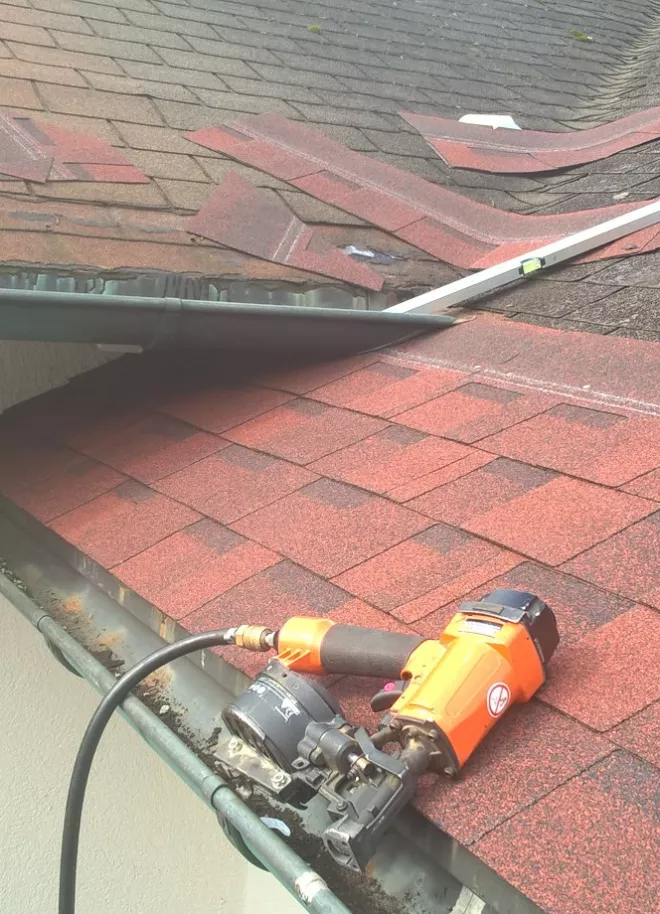
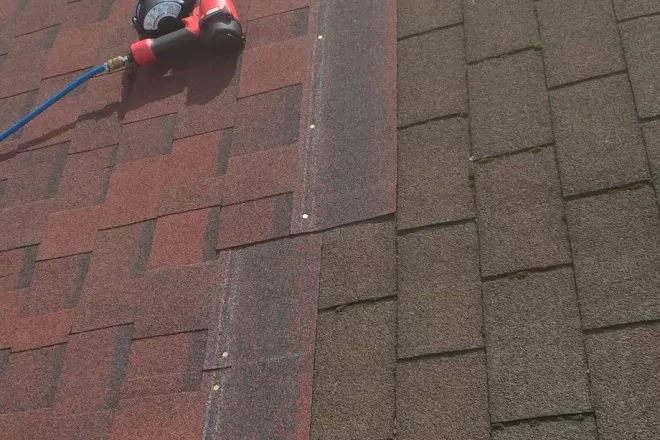
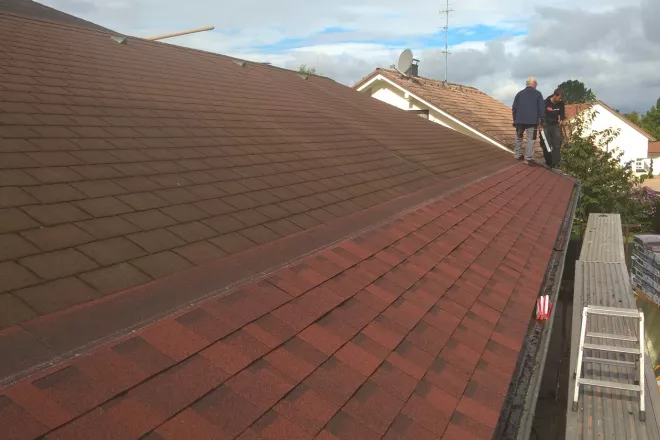
Reroofing can also be done when you simply want or need a change on your roof. If you want a different design or color, or you may be completely renovating your home so you want the roof to match your new style. Installing a new shingle layer will give your roof depth and even a three-dimensional appearance, as it is slightly raised due to the existing layer of shingles beneath it. The best IKO shingle for this is the Cambridge Xtreme 9,5° or Cambridge Xpress.
When it comes to the financial aspect of reroofing, it is undoubtedly less expensive than a complete roof replacement. The main reason for that is that there is no need for a tear off of the old roof – of the existing shingles and the underlying structures. This means that there is significantly less labor needed, as well as time spent on the project, and therefore the costs are lower. Your roofer can immediately start with the installation of the new roof, without spending time on shingle removal and disposal.
When is it not recommended to do reroofing
Every professional roofer after roof inspection will come to you with his report or a recommendation, explaining why your roof is or isn’t for reroofing. You can ask for a few roof estimates from different contractors just to be sure that you are doing the right thing, so that you can choose the best roofer for yourself. One of the main and most straightforward reasons is curling shingles, as you can only install a new layer if an old shingle roof is completely flat and level. Second reason can be an existing damage of wooden structure underneath, such as rot or sagging.
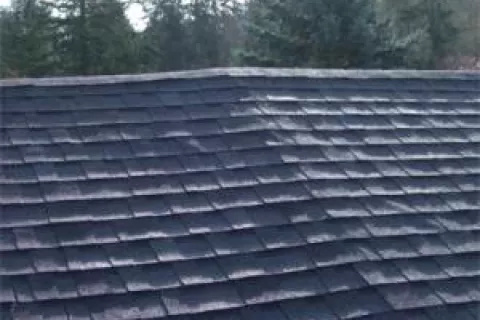
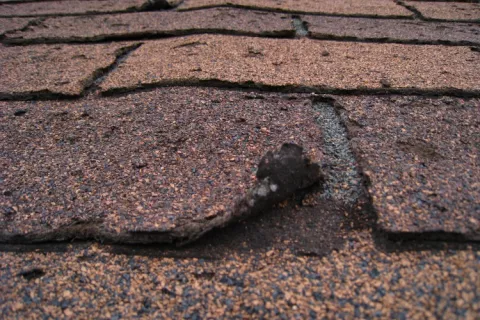
Step by step application of reroofing
Renovations of old, worn out shingle roofs are mostly simple and inexpensive jobs when using IKO bitumen roof shingles in combination with the best techniques. The material cost is not the main cost; Stripping off the roof shingles, disposal and labor are even more significant costs! Before starting off any project, first check out whether the existing roof shingle layer could remain in place or has to be removed. Depending on local building codes at least three layers of roof shingles can be applied before stripping off the roof shingles is necessary.
Even more important are:
- The condition of the existing roof structure must be strong enough to support the additional load of the roof shingles.
- Overall appearance must be flat, if sagging is visible, there might be structural problems needing to be fixed.
- Split and nail flat all buckled, raised tabs and curling roof shingles.
- Nail warped decking material if necessary.
- The fastening anchorage for the nails in the new roof shingle layer must be tested.
- The existing surface has to be reasonably smooth.
- In general even roof shingles, not completely worn out, can be shingled over.
- Replace missing roof shingles or shingle tabs and nail down accidentally curled roof shingle edges.
- If necessary, replace rotten wood trim or worn out chimney and rake flashings or to add eaves flashing.
- Uniform and straight edge of drip edge help prevent water seepage under the old roof shingle edges.
- Additional ventilation should be added.
Before & after: Reroofing over existing roof with Cambridge Xpress 53
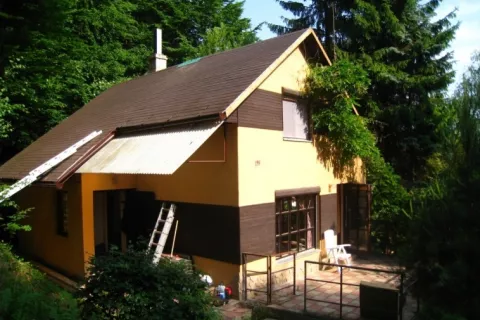
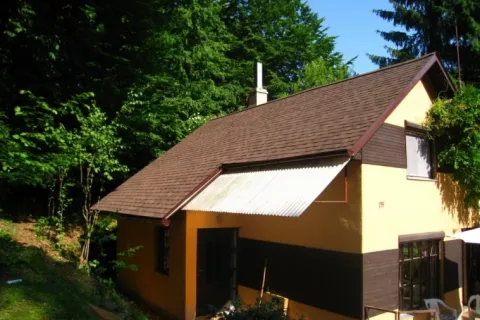
Application requirements
Inspect the complete roof construction looking for defects before starting to reroof. The existing roof should be dry before reroofing as trapped moisture can shorten the lifespan of your roof structure. Clear the roof from debris and fungus before application. Ridge and hip covering has to be removed. New ones have to be installed after the new layer has been applied. Make sure nails are long enough to assure sufficient anchorage. To nail down new hip and ridge cap shingles even longer nails are needed. Consider exchanging old metal flashing for new ones. All existing roof penetrations should be taken out of the old layer and have to be reinstalled in the new layer. Take into account that some techniques require more roof shingles than others.
Application techniques
There are 2 techniques to install shingles that we would like to highlight: bridging and nesting.
Bridging method
The bridging method allows the new course of roof shingles to overlay 2-3 courses of the existing roof shingles. The bridging method usually allows for the proper exposure of the roof shingles and is commonly used when applying metric-sized roof shingles over English-sized or over wood shingles. Installation using this method may lead to “telegraphing” of the underlying material.
Telegraphing (or telemarking) means that the old layer of old shingles may be visible in the newly applied layer of shingles.
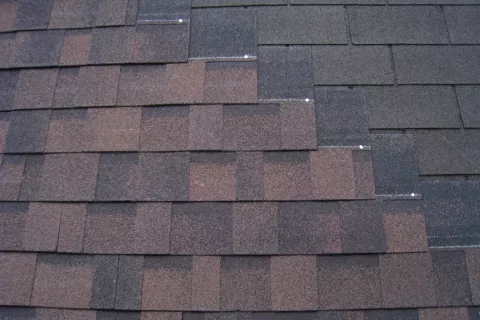
Nesting method
The nesting method usually minimizes the “telegraphing” noted above and is commonly used when applying English or metric-sized roof shingle over like-sized roof shingles. Nesting minimizes the uneven appearance of the roof when compared with bridging over existing roof shingles. Installation using this method may shorten the roof shingles exposure and uses more roof shingles.
The nesting method butts the top edge of the new roof shingle to the bottom edge of the existing roof shingle. This method sometimes is also called “Butt and run” technique.
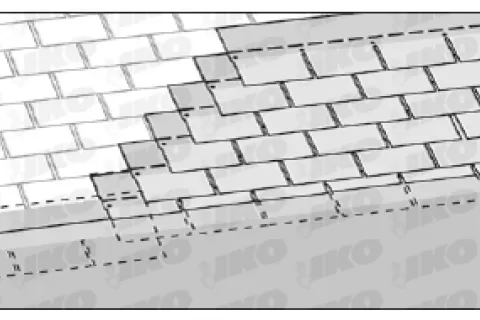
Note:
Try fitting the new roof shingles into the existing layers prior to deciding whether to use this technique. The existing exposure (the exposed part of the roof shingles) mainly determines what the new visual part will be.
Conclusion:
Reroofing is a great option for those who don’t need a complete roof replacement, who have a generally good roof which is at the end of its life cycle or a roof that is slowly losing its function. As opposed to a roof replacement, it does not involve tear off, which means that it reduces both time and cost for the project. It is always a good idea to consult with a roofer you trust, who can do an inspection, give you an accurate estimate, and advise you on what the best option is for you.

